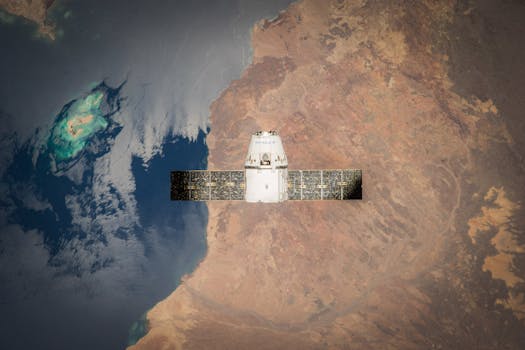
Starlink: The Revolutionary Satellite Constellation by SpaceX
Starlink is a satellite constellation developed by SpaceX, a private aerospace manufacturer and space transport services company founded by Elon Musk. The Starlink project aims to provide high-speed, low-latency internet connectivity across the globe, especially in areas where traditional internet infrastructure is limited or non-existent. With its ambitious goal of launching thousands of satellites into low Earth orbit, Starlink is poised to revolutionize the way we access the internet.
The concept of Starlink was first announced by Elon Musk in 2015, and since then, the company has made significant progress in developing the technology. In 2019, SpaceX launched its first batch of 60 Starlink satellites, followed by several more launches in 2020. As of now, there are over 1,000 Starlink satellites in orbit, and the company plans to launch thousands more in the coming years.
How Starlink Works
Starlink uses a constellation of low Earth orbit satellites to provide internet connectivity. Each satellite is equipped with a range of technologies, including advanced phased array antennas, Hall effect thrusters, and high-gain antennas. The satellites communicate with each other and with ground stations using a complex system of laser links and radiofrequency communications.
The Starlink system uses a technique called beamforming to direct internet signals to specific areas on the ground. This allows the satellites to provide a high-speed, low-latency connection to users, even in areas with limited or no traditional internet infrastructure. The system also uses advanced compression and caching techniques to reduce latency and improve overall performance.
Benefits of Starlink
The Starlink satellite constellation offers several benefits, including global coverage, high-speed connectivity, and low latency. With its ability to provide internet access to remote and underserved areas, Starlink has the potential to bridge the digital divide and bring people closer together. The system is also designed to be highly resilient and fault-tolerant, with built-in redundancy and backup systems to ensure continuous operation.
In addition to its technical benefits, Starlink also has the potential to enable a range of new applications and services, such as remote healthcare, online education, and emergency response systems. With its ability to provide high-speed internet access anywhere in the world, Starlink could also enable new types of businesses and industries, such as remote work, e-commerce, and digital entrepreneurship.
Challenges and Controversies
While Starlink has the potential to revolutionize the way we access the internet, it also faces several challenges and controversies. One of the main concerns is the potential for increased space debris in low Earth orbit, which could pose a risk to other satellites and spacecraft. There are also concerns about the impact of Starlink on the night sky, with some astronomers arguing that the satellites could interfere with astronomical observations.
In addition to these technical concerns, there are also regulatory and political challenges facing Starlink. The company must navigate a complex web of international regulations and agreements, including those related to satellite communications, spectrum allocation, and space debris mitigation. There are also concerns about the potential for Starlink to be used for military or surveillance purposes, which could raise ethical and human rights concerns.

